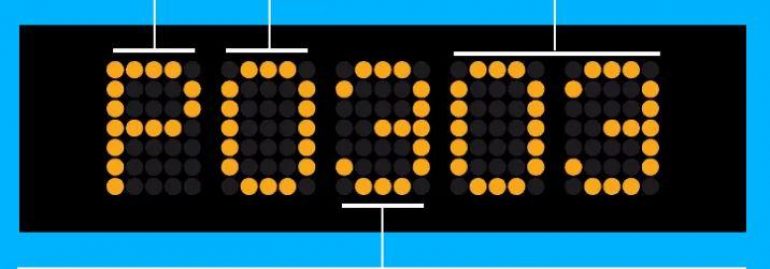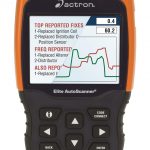What are the OBD-II fault codes? P-codes and C/A codes are two of the most commonly encountered types. These codes represent errors in your car’s OBD-II diagnostic system. In this article, we’ll explain the differences between the two. Then, we’ll discuss how to diagnose the problem based on the code you see. And finally, we’ll explain what to do if you see more than one P code.
OBD-II diagnostics system
There are various ways to diagnose a problem with your vehicle. The OBD-II diagnostics system logs a range of sensor values that are used to set a variety of fault codes. Freeze-frame data is one of these. This data is stored in the system memory until a specific fault or error is identified and repaired. The original freeze-frame data can be overwritten by harder codes, such as those related to the engine or catalytic converter.
When it comes to diagnosing problems, you’ll need to know the type of code to read. There are generic codes and manufacturer-specific codes. Generally, “P” codes refer to problems related to the powertrain, while “C” codes pertain to chassis and body systems. A generic code will be a zero while a dealer-specific code will be a one. The first one is an indication of a malfunction in the engine or transmission.
Another way to determine a vehicle’s problem is to check the “P” codes on a car’s dashboard. The “P” code is the third byte and indicates the failure mode. In CARB-approved cars, a warning light will light up. In some cases, this means an oil or transmission problem, which could require replacement. If you want to diagnose a fault yourself, check out the On-Board Diagnostics (OBD) program.
OBD-II fault codes
The first thing to remember when looking at OBD-II fault codes is that they don’t always tell you what’s wrong with your car. They may be a symptom of a different problem. In addition to malfunctioning parts, they may also indicate a faulty component or a component that needs to be replaced. The codes are just the first piece of the puzzle when trying to identify the problem.
However, not all faults will produce a check engine light. Low-priority codes aren’t likely to be the cause of the CEL, and they often come on intermittently. These should not be ignored. Most CEL-causing codes should be addressed immediately. This article will discuss how to read these codes. It is also worth noting that while some CEL-causing codes are benign, others require immediate attention.
The first OBD-II code is P0301. This is an indication that the emission control system of the car is failing. If this occurs again, the Check Engine Light will turn on. If a pending code persists, it will turn into an Active code, which will trigger a check engine light. Further, a vehicle’s code may fall under a different family of codes. As such, a vehicle’s engine and transmission are covered under P. However, the vehicle manufacturer may also choose to add enhanced codes that provide more detailed information about the car’s condition. These include codes for the body of the vehicle, the airbags, the brake fluid, and other parts of the car.
P-codes
Like zip codes and postal codes, p-codes are a data management system that provides unique reference codes for individual locations. These codes are used to organize data in a standardized and structured manner and allow for a systematic method for linking, exchanging, and analyzing data. P-codes can link any location to a particular piece of information. The Humanitarian Response Pcode implementation is one example of this. P-codes are similar to standard Pascal procedures, but have several advantages.
The main benefit of a p-code is that it is much easier to develop than machine or native code. A p-code program can be developed in a relatively short time, as it does not have to account for machine-dependent behavior. Besides, p-code programs tend to be smaller than machine code, which allows the p-code interpreter to apply additional run-time checks. And, of course, p-codes are much easier to understand than machine code.
Although P-codes were first introduced for light-duty vehicles in 1996, they have become more widespread in commercial vehicles. Technicians use them more often for medium-duty vehicles, but you can look up the P-code for your vehicle by using Mitchell 1 products. If you have a vehicle that has a P-code for engine failure, you should be able to determine what is causing the problem. If you do, you can fix the problem yourself and save a bundle of money!
C/A codes
The P(Y) and C/A codes are vehicles for transferring information from satellites to terrestrial systems. Both are developed by the Department of Defense many years ago and are the basis of civilian surveying. They provide a minimum level of positioning capability for national security, but are intentionally degraded through Selective Availability. The P(Y) code has been around longer and is a more advanced form of C/A code.
L1C is composed of a data and pilot component that share the same phase carriers. They are transmitted at a rate of 1.023 Mbit/s. A secondary code, L1CO, is predefined. The data portion takes up 25% of the signal power, while the pilot component occupies 75% of the signal. The data portion is modulated with BOC(1,1), while the pilot is modulated with TMBOC.
Both the P and C/A codes are similar, except for their delays. They are also identical, but cannot be transmitted at the same time. This causes mutual interference, which makes one signal useless. The degree of mutual interference depends on the power levels of the two GPS receivers. This is why Selective Availability was instituted. By presidential order, it was switched off on May 2, 2000. In the meantime, the civilian C/A code is used.
Generic codes
P-codes are defined by a certain manufacturer’s code set that is used to diagnose and repair automotive issues. The code system is broken down into three subcategories: body (B-codes) and chassis (C-codes). The body category encompasses mechanical systems, including the brake system and suspension. The powertrain (P-codes) category covers the engine and transmission and any associated drivetrain accessories. The network and vehicle integration (U-codes) category consists of shared computer systems. The first digit of each code will tell you if it is generic or manufacturer-specific.
Generic codes have been in use for over 15 years, but they have recently become a standard in the commercial vehicle industry. First required in 1996 for light-duty vehicles, they are a relatively recent development in the commercial vehicle industry. Today, technicians encounter these codes more frequently, and Mitchell 1 products are a convenient resource for identifying them. In addition to their helpfulness in diagnosing engine problems, P-codes are a good way to save money on parts and labor.
Often, diagnostic issues occur in the engine compartment. While generic P codes are a common indicator of problems, manufacturer-specific codes can be more difficult to identify. In addition to identifying specific faults, generic codes are also useful for determining whether a certain part needs replacing. To learn more about the codes, check out Mitchell 1 TruckSeries Repair module. You can also download specific fault codes from the manufacturer’s website.
Manufacturer-specific codes
Unlike generic codes, manufacturer-specific codes are exclusive to specific makes and models. The first number of the sequence indicates the problem. These codes are not universal; instead, they apply to a standardized system in the automotive industry. For example, P1220 on an Audi is a code for the powertrain, while P14CE on a BMW is a code for the mass air flow sensor. If you are unsure which code your car needs, start by collecting the manufacturer-specific codes for that particular model.
Manufacturer-specific codes are usually the result of a specific issue with a vehicle’s engine or transmission. While P1xxx codes refer to problems with the drivetrain and transmission, C2xxx and U2xxxx codes are reserved for different car manufacturers. Originally, DTCs were divided into three subsystems: B0xxx, P3xxx, and U2xxxx. In the latest document, manufacturers have abandoned the division of DTCs by functional area and replaced them with a single generic code.
As with the generic code, a manufacturer-specific code can identify specific issues within a vehicle’s engine. These codes are specific to one particular make or model and can help troubleshoot the vehicle. However, the second digit indicates if the problem is general, specific to a particular part, or a particular system. Manufacturer-specific codes have more details and are considered necessary by vehicle manufacturers. If you notice one of these, consult your vehicle’s owner’s manual to find out what the problem is.
Common causes of p codes
Transmission trouble codes can be caused by many problems. For instance, they may appear when the transmission has a gear ratio problem. A malfunctioning shift solenoid can cause this error. The transmission’s hydraulic control section controls the gears, so a failure of this component can result in a malfunctioning transmission. Other common causes include a low transmission fluid level. Your mechanic will be able to determine if any other repairs are necessary after performing a computer diagnostic on your car.
Another common cause of code P0171 is an “under reporting” Mass Air Flow Sensor. This sensor tells the computer that less air is entering the engine than actually occurs. If this is the case, you should have your Mass Air Flow Sensor replaced. If this does not fix your problem, you can try upgrading your PCM software. P codes may also be the result of a malfunctioning sensor or clogged passages.






